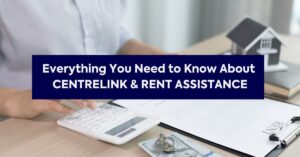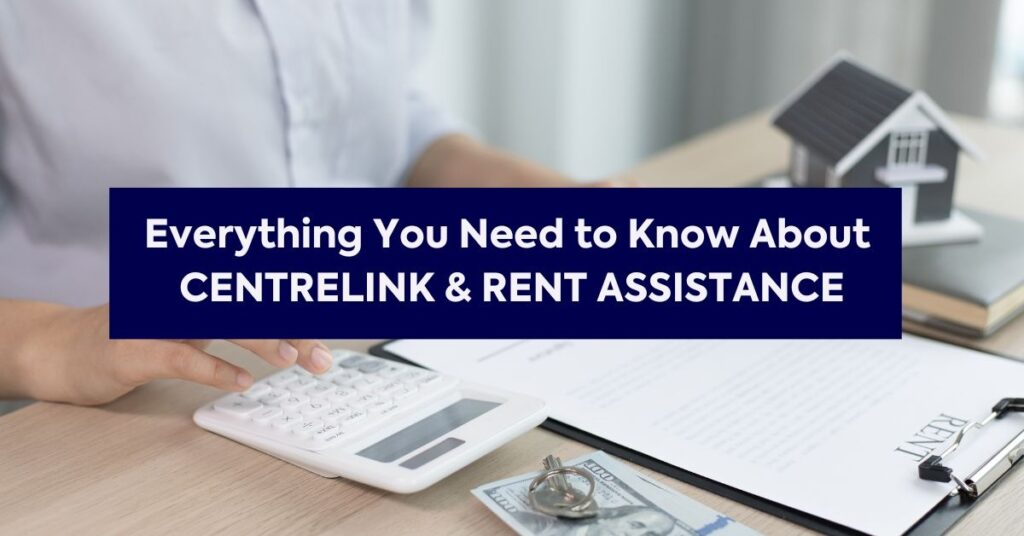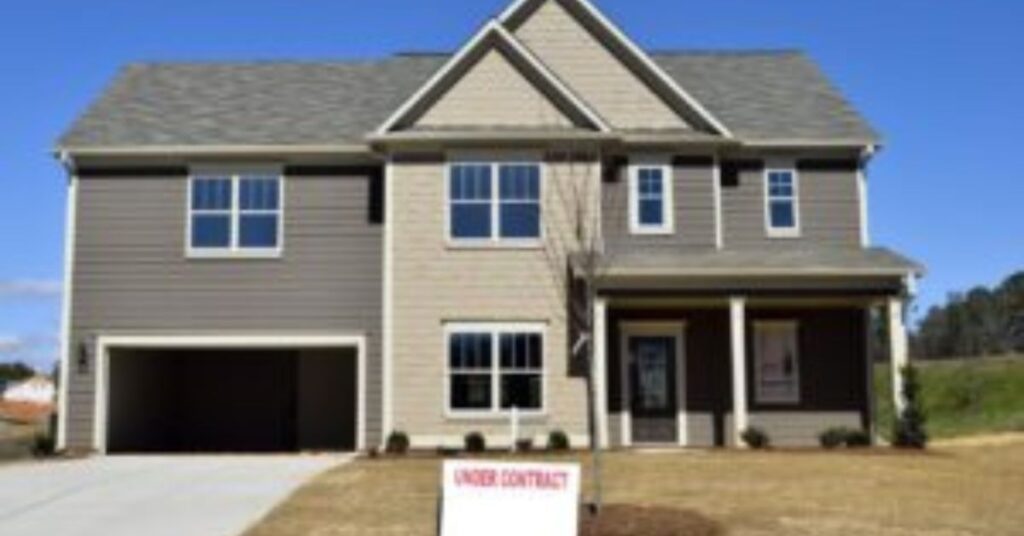Thinking about property as part of your financial plan? It’s a big step, and getting it right can make a real difference to your long-term goals. Whether you’re looking to buy your first home, invest in a rental, or just understand how property fits into the bigger picture, having the right information is key. This guide provides valuable insights into real estate for personal finance planning, enabling you to make more informed decisions.
Why Real Estate Matters in Personal Financial Planning
Real estate touches almost every part of your money life—income, spending, debt, and long-term security. It’s not just “another asset”; it’s a place to live, a way to build equity, and a potential source of income. Real estate matters because it ties your housing needs to long-term wealth in one move.
- Long-term equity growth: Repaying principal plus steady price gains can compound your net worth over decades. Even modest growth changes the picture when debt is paid down.
- Inflation match: Rents and replacement costs tend to rise with prices, which helps protect purchasing power.
- Cash flow potential: A rental can produce income, but only after interest, rates, insurance, repairs, and vacancy. Underwrite conservatively.
- Diversification: Property often behaves differently from shares and bonds, reducing total portfolio swings—though a single dwelling is still concentrated risk.
- Leverage with guardrails: Sensible borrowing can lift returns; poor buffers and rising rates can undo them. Keep a cash reserve.
- Housing-cost hedge: Owning your home can stabilise living costs and lower retirement needs by removing rent from the budget.
- Tax settings and control: Depreciation, interest deductibility (where applicable), and direct control over improvements can shape outcomes.
When weighing where to buy or invest, anchor decisions in location fundamentals—jobs, population flows, transport links, and liveability—as these drive demand and resilience through cycles.
| Property type | Liquidity | Income profile | Effort required | Volatility felt | Typical role in a plan |
| Owner-occupied home |
Low |
None |
Low–medium | Low (not priced daily) | Hedge housing costs; anchor equity |
| Investment property |
Low |
Rent |
Medium–high | Medium | Income and growth over time |
| REITs/Property ETFs |
High |
Dividends |
Low | High (market-priced) | Liquid property exposure |
Match property choices to your time horizon and cash buffer first; the returns only help if you can hold through the rough patches.
Real estate earns its place in a plan when it fits your goals, cash flow, and risk tolerance—not just because prices went up last year. Keep the numbers simple, leave room for surprises, and aim for staying power.
Defining Your Goals: Owning vs. Investing
Sorting out whether you want a home to live in or a property to build income is the first real fork in the road. One anchors your lifestyle; the other aims to grow your money. Both can work, but they pull in different directions.
Decide what matters more right now: housing stability and lifestyle, or cash flow and growth.
| Option | Main purpose | Cash flow | Tax treatment (AU) | Liquidity | Time & effort |
| Primary residence (PPOR) | Housing security, forced saving | No rent; ongoing costs only | Generally CGT-free under main residence rules | Low (sale takes time and costs) | Maintenance and rates |
| Investment property | Income and long-term growth | Rent minus mortgage and costs may be positive or negative | Expenses deductible; CGT may apply on sale (discount after 12 months) | Low | Tenant, repairs, compliance |
| REITs/Property ETFs | Diversified property exposure | Distributions vary | Taxed as income; simple record-keeping | High (trade on market) | Minimal, no direct management |
Key questions to set your direction:
- Time horizon: Are you settling for 7–10 years or keeping flexible for work or family changes?
- Cash flow strain: Can your budget handle rate rises, vacancies, and repairs without stress?
- Involvement: Comfortable managing tenants and tradies, or do you want a set-and-forget option?
- Location vs return: Would you live where the numbers work, or would you rather rent where you want and invest where returns stack up (rentvesting)?
- Risk buffers: Do you hold 3–6 months of costs in cash for the unexpected?
- Return focus: Are you chasing steady income (yield) or aiming for capital growth and equity over time?
- Exit plan: If you had to sell, how quickly could you exit and at what likely cost?
If your next five years are stable and you want roots, owning your home can make sense. If flexibility matters and you want income or scale, an investment (or REITs) often fits better.
Practical ways to proceed:
- Write a one-page brief: purpose, budget, time frame, target suburbs/vehicles, and your deal-breakers.
- Stress-test the numbers at higher interest rates and with a few weeks of vacancy each year.
- Pick one path for the next 12–24 months and track results; you can pivot as life and rates change.
Assessing Affordability & Using Smart Financing

Affordability is more than getting a bank’s tick. It’s about steady cash flow, buffers for bad weeks, and picking a loan that doesn’t box you in. Always test your budget at higher interest rates before you commit.
- Map your steady take-home pay and fixed bills; ignore bonuses and overtime for safety.
- Price the full cost of ownership: mortgage, council rates, strata, insurance, utilities, maintenance, commuting, and stamp duty (upfront or saved).
- Stress‑test repayments at your rate plus 3 percentage points; for investors, also allow for rent gaps and repairs.
- Build buffers: 3–6 months of living costs and a separate property repair fund.
- Set a purchase cap based on comfort, not the lender’s maximum; keep debt levels sensible.
A quick look at market news updates helps you stay alert to rate moves and policy changes that affect borrowing power and timing.
| Checkpoint | Target/Guide | Notes |
| Housing cost ratio (owner-occupier) | 25–30% of gross income | Includes loan, strata, rates, and insurance |
| Total debt-to-income (DTI) | Keep it modest (often ≤ 6x) | Lower DTI means more breathing room |
| Loan-to-value ratio (LVR) | ≤ 80% | Helps avoid LMI and can sharpen pricing |
| Rate buffer | +3.0 percentage points | Test repayments at the higher rate |
| Cash buffer | 3–6 months expenses | Investors may hold 6–12 months |
| Vacancy/repairs (investor) | 5–10% of rent | Smooths cash flow shocks |
Smart financing moves that save pain later:
- Compare the comparison rate, not just the headline rate; fees matter over time.
- Choose fixed, variable, or a split: fixed gives payment certainty; variable offers flexibility; split balances both.
- Use an offset account to reduce interest while keeping access to cash; it’s often more flexible than redraw.
- Make extra repayments early and often; fortnightly payments can quietly cut years off the loan.
- Consider a rate lock if going fixed and settlement is weeks away; it protects against jumps.
- Avoid interest-only unless you have a clear investment plan and a path back to principal and interest.
- Keep LVR at or below 80% where possible; if higher, weigh the cost of LMI against waiting to save more.
- Check features you’ll actually use (portability, repayment pauses, refinance costs) and skip paid extras you won’t.
Borrow for the life you can afford on your worst month, not your best one. Keep cash handy, keep terms simple, and let time do the heavy lifting.
Key Investment Metrics & Benchmark Indicators
Good property decisions come from numbers you can explain in one breath. If the math only works with rosy assumptions, it probably doesn’t work. Always weigh returns against risk, not just the headline yield.
| Metric | How to calculate (plain) | Rule of thumb/benchmark | Why it matters |
| Net Operating Income (NOI) | Rent + other income − vacancy − operating expenses | Positive and resilient under stress test | Core driver of value and debt cover |
| Capitalisation Rate (Cap rate) | NOI ÷ purchase price | Compared to local comps, should exceed risk‑risk-free rate by a margin | Quick read on value vs income |
| Gross Rental Yield | Annual rent ÷ purchase price | Useful screen only; ignore if costs are high | Early filter, not a decision tool |
| Cash‑on‑Cash Return | Annual pre-tax cash flow ÷ total equity invested | Residential often 4–8%; commercial can be higher | Shows what your cash actually earns |
| Debt Service Coverage (DSCR) | NOI ÷ annual loan payments | ≥ 1.25 (banks often want this or more) | Cushion against interest rate or rent shocks |
| Loan‑to‑Value (LVR) | Loan ÷ appraised value | ≤ 80% common for investment; lower is safer | Limits downside if values fall |
| Operating Expense Ratio (OER) | Operating expenses ÷ effective gross income | 30–50% typical; know your asset’s norm | Flags under-‑ or over-spending |
| Break-Even Occupancy | (Expenses + debt) ÷ gross potential income | Aim < 85–90% | Room to breathe if vacancies rise |
| Equity Multiple (projected) | Total cash back ÷ equity invested | > 1.5× over multi-year hold is a common aim | Puts the whole journey in one figure |
| Internal Rate of Return (IRR) | Discount rate that sets NPV to zero | Compare to REIT yields and bonds + risk margin | Time‑weighted return including exit |
Practical use (keep it simple):
- Build a 10-year base case: realistic rent growth, vacancy, maintenance, and capex. No hero numbers.
- Stress test: +2–3% interest rate, −10% rent, +10% expenses. Re‑check DSCR, cash flow, and value.
- Benchmark against the market: suburb cap rates, REIT distribution yields, and the RBA cash rate plus a risk buffer.
- Check liquidity and exit: days on market, buyer depth, and an exit cap rate that’s slightly higher than your entry.
- Compare like‑for‑like: same property type, same area, same assumptions. Otherwise, the league table lies.
If the deal only works at full occupancy, with perfect tenants and flat interest rates, it’s not a plan—it’s wishful thinking.
What often trips buyers up isn’t the purchase price. It’s the missing line items—leasing downtime, land tax changes, insurance jumps, and the roof that fails in year three. Put these in the model. The right benchmarks won’t guarantee a win, but they will help you avoid the losses that are hard to come back from.
Risk Management, Diversification & Liquidity Planning

Real estate can build wealth, but it can also tie up cash and concentrate risk if you’re not careful. Your plan should spell out what you’ll risk, how you’ll spread it, and how you’ll raise cash without selling in a panic.
Key guardrails to set upfront:
- Position sizing: cap total property exposure (e.g., 30–40% of net worth) and any single asset (e.g., 10–15%).
- Cash buffers: hold 6–12 months of interest, rates, insurance, body corporate, and basic maintenance per property.
- Debt health: target LVR in a comfortable range (e.g., 60–70%), keep DSCR/ICR ≥ 1.5x, stagger loan expiries, and consider a mix of fixed and variable rates to spread rate risk.
- Income risk: budget for 5–10% vacancy and possible rent drops; watch tenant/sector concentration.
- Protection: landlord and building insurance, adequate liability cover, and clear documentation on guarantees.
- Stress tests: model −10% rent, +2–3% interest rates, unexpected capex, and slower sale timelines.
Liquidity matters because property does not sell overnight, and sale prices can shift under pressure. A simple liquidity ladder helps you rebalance without fire sales.
| Vehicle | Typical exit time | Price impact at exit | Rebalancing |
| Direct property | 1–6+ months | It can be large if the sale is rushed | Hard |
| Unlisted property fund/syndicate | Quarterly–annual windows | Unit pricing and gates may apply | Limited |
| Private mortgage/debt | To maturity | Early exit is often unavailable | None before maturity |
| Listed REITs/ETFs | Same day | Market moves can be sharp | Easy |
Diversification is more than owning two houses on the same street. Spread by region, tenant base, and property type (residential, industrial, healthcare, etc.), and mix direct assets with listed vehicles for a liquidity sleeve. Correlations can jump in a downturn, so set assumptions that are conservative. For a broader portfolio view, see real estate risks.
If you’ll need funds in the next few years, keep that money in liquid assets. A healthy buffer beats a forced sale every time.
A practical liquidity plan in five steps:
- Map 24 months of property cash flows, including likely vacancies and maintenance; add a 10–20% margin of safety.
- Ring‑fence reserves in an offset or high-interest account; don’t count them as spendable.
- Stagger loan maturities so nothing major rolls all at once; apply early for renewals.
- Pre-set sell rules (e.g., if DSCR falls below 1.2x or a single asset exceeds your cap, review for sale).
- Hold a small allocation to listed REITs/ETFs as your “liquid property” sleeve to rebalance around market moves.
Tax, Estate & Exit Planning Considerations
Taxes shape your real estate returns more than most investors expect. Plan the ownership, deductions, and exit path before you sign anything; otherwise, you end up chasing fixes later.
CGT settings, structures, and timing matter
| Owner type | CGT discount if held >12 months | Notes |
| Individual (resident) | 50% | Discount applies to the net capital gain |
| Trust | 50% | Discount can flow to beneficiaries |
| Company | 0% | No CGT discount for companies |
| SMSF (accumulation) | 33.3% | Effective tax on the discounted gain is often ~10% |
Practical tax points to get right
- Interest and holding costs: Deductible where the purpose is income production. If the property is partly private (e.g., short-stay in your home), apportion carefully.
- Depreciation and building write-off: Capital works deductions reduce your cost base, which lifts the taxable gain on sale. Residential second-hand plants are generally not depreciable by the new owner; new assets are different.
- Land tax and duty: Model state-based land tax and any absentee surcharges over a few years, plus stamp duty on purchase and possible duty on restructures.
- GST: Existing residential sales are generally input-taxed (no GST on sale, no credits on costs). New residential or commercial property can trigger GST if you’re registered. The margin scheme may apply, but it’s technical.
- If you operate property as a business (developments, short-stay at scale), speak with a tax professional about finance and deductible leasing, as that can shift cash flow and exit timing.
Estate planning: who controls what, and what happens on death
- Ownership choices: Joint tenants pass to the survivor automatically; tenants in common pass via the Will. Pick the path that matches your control and succession goals.
- Will and testamentary trust: Useful for income streaming to minors at concessional rates and protecting assets from claims. Keep loan offsets, guarantees, and company directorships in view.
- Superannuation nominations: A binding death benefit nomination can move super to your estate or dependants; it sits outside the Will if paid directly to dependants.
- Death and CGT: There’s a rollover to the estate or spouse in many cases. The main residence exemption can still apply if the property is sold within certain timeframes (often two years), but get advice before you list.
Exit planning checklist (12–24 months out)
- Map the tax outcome across two financial years. Harvest capital losses were sensible and plan trust distributions before 30 June.
- Build a true net sale figure: agent commission, marketing, legal, staging, discharge fees, and any buyer adjustments at settlement.
- Check debt costs: fixed-rate break fees, redraw/offset strategy, and whether refinancing beats selling.
- Factor in “clawbacks”: capital works deductions reduce cost base; plant balancing adjustments can be assessable income.
- Plan where the proceeds go next: mortgage reductions, offsets, term deposits, or a pipeline deal—keep a liquidity buffer.
Give yourself time. A clean exit usually needs one full tax year of prep to line up deductions, timing, and paperwork without rushing.
Leveraging Technology & Passive Real Estate Vehicles

Technology can shorten research time, widen your deal funnel, and cut avoidable mistakes. Put bluntly, you can get property exposure today without fixing taps or chasing tenants, and still keep good control over risk.
Practical ways to use tech in your process:
- Discovery: property portals with custom alerts, suburb heatmaps for vacancy and rent growth, planning maps for new supply, and auction result feeds.
- Analysis: cash flow and yield calculators, rate-stress tests, cap-rate comparators, and buy-vs-rent models. Save your assumptions and run scenarios before you commit capital.
- Execution and admin: digital ID checks, e-signing, low-cost brokers, mortgage marketplaces, and property management apps for rent collection, maintenance tickets, and expense tracking that plug into your tax software.
- Risk signals: watchlists for days-on-market, vacancy, building approvals, credit spreads, and central bank rate moves.
Passive real estate vehicles at a glance:
| Vehicle | Liquidity | Typical income yield | Fee profile | Min investment | Key risks |
| Listed REITs (A‑REITs) | Daily (market traded) | ~3%–6% | Low–Moderate | Brokerage size | Equity market swings; rate sensitivity |
| REIT ETFs | Daily (market traded) | ~3%–6% | Low (MER) | Brokerage size | Same as A‑REITs; index concentration |
| Unlisted property funds | Quarterly or longer | ~4%–7% | Moderate–High | ~$5k–$50k | Withdrawal queues; valuation lag |
| Crowdfunding/syndicates | Deal-specific lockups | Varies (often 0%–8%+ cash; upside on exit) | High (deal fees) | ~$100–$10k | Project risk; manager quality |
| Real estate debt funds (mortgage trusts) | Monthly–Quarterly | ~5%–9% | Moderate | ~$1k–$25k | Credit/default risk; collateral quality |
How to slot these into a personal plan:
- Define the job: steady income, inflation cover, or growth. Pick vehicles that match that job rather than chasing yield.
- Set an allocation band (for example, 5%–20% of the portfolio) and split by liquidity: some listed (daily), some unlisted (longer). This helps with cash flow needs.
- Check costs and tax: MERs, buy–sell spreads, performance fees, and the mix of taxable vs tax-deferred distributions.
- Diversify by sector (industrial, healthcare, retail, residential) and by geography to avoid one‑bet risk.
- Automate contributions and rebalancing through your broker; use alerts to review when rates, vacancies, or credit conditions shift.
Start with liquid options you can exit quickly, track how they behave through a rate cycle, then consider longer lockups once you’re comfortable with the downside.
The bottom line: use modern data and simple tools to make decisions upfront, then pick passive vehicles that fit your goals, costs, and need for liquidity.
- Maintaining & Adjusting Your Plan Over Time

Plans age fast in property Markets shift, rates jump, tenants move, and life throws curve balls. The aim is not perfection; it’s a tidy rhythm of review, small fixes, and the odd larger reset when the numbers tell you so. Set a clear review rhythm, measure the same numbers, and act when your guardrails are breached.
- Cadence that works: quarterly portfolio check, pre–30 June tax review, and a deeper annual reset. Book them now, then treat them like you would a mortgage repayment.
- Triggers for mid-cycle tweaks: rate moves of ±1%, local yields change by ±0.5%, new land‑tax or tenancy rules, large insurance increases, major life events (new child, job change, inheritance), or if a property is cash‑flow negative three months in a row.
- Data hygiene: one source of truth for rent, expenses, loan terms, lease dates, and upcoming maintenance. Back it up. Use an annual review checklist to keep meetings focused and outcomes usable.
Example guardrails to watch
| Metric | Yardstick | Action is off course |
| Loan‑to‑Value (LVR) | ≤ 70% across portfolio | > 75%: pause new buys, consider extra repayments or a principal & interest switch |
| Interest Coverage (ICR) | ≥ 2.0x (net rent ÷ interest) | < 1.5x: trim costs, adjust rent, fix part of the rate, or reduce debt |
| Net Rental Yield | Within 1% of the suburb median | Underperforming: review pricing, presentation, and the property manager |
| Vacancy (12‑months) | < 5% | > 8%: re-market, refresh photos, consider minor upgrades |
| Cash Buffer | 6–12 months of expenses | Top up via savings, offset, or delay capex until rebuilt |
Adjustment playbook
- Reprice and re-tenant: check rent against comparable listings, renew early with good tenants, and fix small repairs before advertising.
- Restructure debt: review fixed vs variable split, term length, offset use, and break costs well before a rollover date.
- Prune or add: sell persistent laggards, consolidate to fewer higher-quality assets, or add where cash flow and buffers remain healthy.
- Rebuild buffers: lift emergency cash, right-size insurances, and smooth expenses with sinking funds for roofs, hot‑water, and paint.
- Tax tune-ups: refresh depreciation schedules, track deductibles, and time large works around income and the financial year.
Small, timely changes beat heroic turnarounds. Put dates in the diary, follow the numbers, and keep your downside covered.
Review your plan often—each month or after big changes. Tweak what isn’t working, keep what is, and stay flexible. For simple tips and friendly support, visit our website to learn more or contact our team.
Frequently Asked Questions
What are the main advantages of owning property for my finances?
Owning property can help you build wealth over time as its value often goes up. It can also provide a steady income if you rent it out, and you might get tax breaks too. Plus, it’s a solid, physical asset you can see and touch, which many people find reassuring.
What are the downsides or risks involved in real estate investing?
Real estate isn’t always easy to sell quickly when you need cash. Property values can also drop, meaning you could lose money if you have to sell during a slow market. You’ll also have ongoing costs like repairs, taxes, and insurance, and if you rent it out, there might be times when it’s empty, or you’ll have to deal with managing tenants.
How do I begin investing in real estate?
To get started, it’s a good idea to learn as much as you can about how real estate works and different ways to invest. Make sure your own finances are in order, especially for a deposit and other costs. Research areas where property values might increase, and consider building a team of helpful professionals, like a real estate agent or a mortgage broker.
What are the tax effects of owning property to rent out?
Owning property for rental income usually comes with tax benefits. You can often claim deductions for things like mortgage interest and property taxes. The property itself can also be ‘depreciated’ over time, which can lower your taxable income. It’s best to chat with a tax expert to understand all the specifics for your situation.
How do I pick the best property investment for me?
Choosing the right property depends on what you want to achieve with your money, how much risk you’re comfortable with, and how much time you can dedicate to it. Think about whether you want quick profits or long-term growth, if you need regular income from rent, and how hands-on you want to be with managing the property.
Are there ways to invest in property without owning it directly?
Yes, absolutely. You can invest in property indirectly through things like Real Estate Investment Trusts (REITs), which are companies that own and manage properties. You can also buy shares in companies that are involved in real estate or invest in funds that focus on property.












